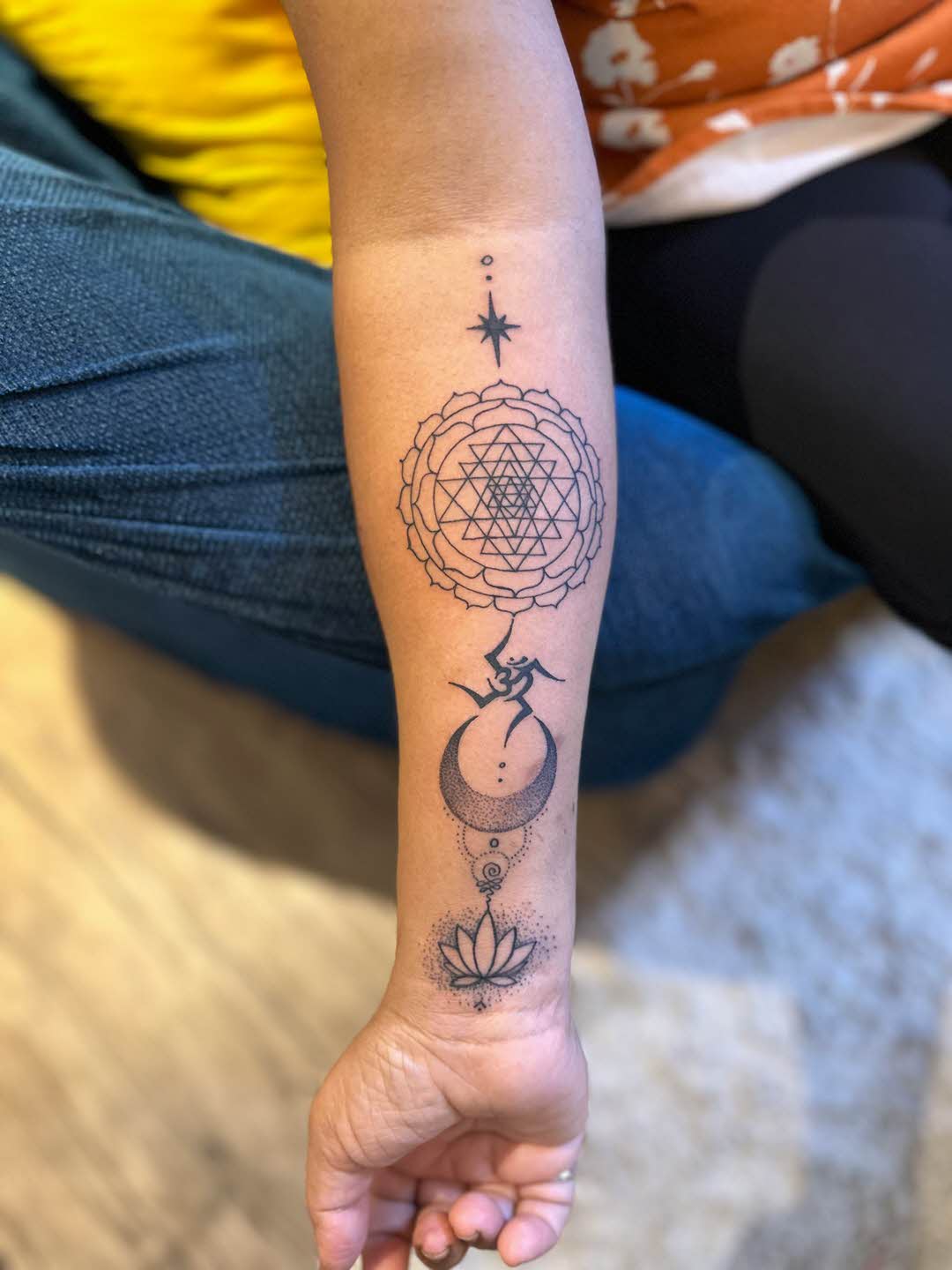The Historical and Cultural Significance of Mandala-Style Tattoos
Mandala-style tattoos have gained immense popularity in the tattoo world due to their intricate design and deep spiritual symbolism. These tattoos are often characterized by geometric shapes, concentric patterns, and radial symmetry, all of which evoke a sense of balance and harmony. But beyond their aesthetic appeal, mandala tattoos carry rich historical and cultural significance rooted in ancient traditions.
In this blog post, we will explore the origins, meaning, and cultural importance of mandalas, shedding light on why these designs continue to captivate people today.

Be You Tattoo – A Mandale-Style Tattoo
Origins of the Mandala
The word “mandala” originates from the ancient Sanskrit language, meaning “circle.” The circle itself is a symbol of wholeness, unity, and completeness, signifying the cyclical nature of life, death, and rebirth. Mandalas are not only found in tattoos but also a variety of cultural and spiritual practices worldwide. Their roots can be traced back to Hinduism, Buddhism, and other Eastern philosophies.
In Hinduism, the mandala represents the universe, with its intricate geometry symbolizing the various layers of existence. These designs are often used in meditation practices, where they are seen as tools to focus the mind and connect with higher spiritual states. The process of creating or gazing at a mandala is said to help individuals attain inner peace, clarity, and enlightenment.
In Buddhism, mandalas hold similar meanings but are often used as part of ritualistic practices, especially during meditation and prayer. The Tibetan Buddhist tradition, in particular, is renowned for its intricate mandala art, which serves as a symbolic map of the universe. Creating a mandala in this context is an act of devotion, a means of visualizing the cosmos, and a tool for attaining nirvana or ultimate enlightenment.
Cultural Significance of Mandalas in Tattoos
Mandala tattoos have their roots in these ancient traditions but have evolved to represent personal meaning, spiritual growth, and individuality. People who choose mandala tattoos are often drawn to the symbol’s ability to provide a sense of inner peace and balance. The mandala’s geometric patterns can represent the alignment of the body, mind, and spirit, making it a popular design for those seeking a connection to their inner self.
In modern tattoo culture, mandala tattoos are often viewed as a symbol of unity and harmony. They are commonly used as representations of personal transformation or milestones in life. For example, some individuals choose to get a mandala tattoo after overcoming personal challenges or embarking on a spiritual journey, as the design symbolizes the growth and balance they have achieved. The circular form of the mandala itself is seen as a representation of life’s cyclical nature and the idea that life is an ongoing process of transformation.
The Aesthetic Appeal of Mandala Tattoos
The beauty of a mandala tattoo lies in its complexity and symmetry. The intricate lines and detailed patterns can range from simple and subtle to grand and elaborate, making it a versatile design that can be adapted to various styles and sizes. The tattoo can be placed almost anywhere on the body, with popular locations including the forearm, back, shoulder, and chest.
Additionally, the combination of shapes such as triangles, squares, and circles is believed to align the individual with the universe, thereby enhancing their sense of balance and mindfulness. Many people find comfort in the idea that these tattoos are more than just body art—they are symbolic representations of their journey, growth, and connection to the universe.
Mandala Tattoos as a Modern Spiritual Expression
In contemporary times, mandala tattoos are not only seen as a spiritual symbol but also as a form of personal expression. Individuals who get these tattoos often do so to represent their unique journey, reflecting a deep sense of identity, self-awareness, and spiritual growth. Whether inspired by Eastern philosophies or a desire for personal balance, the mandala has transcended its cultural roots to become a universal symbol of inner peace, unity, and transformation.
In conclusion, mandala-style tattoos are not just beautiful designs but carry profound historical and cultural significance. Whether used for meditation, spiritual growth, or personal expression, these tattoos serve as a constant reminder of the importance of balance, unity, and transformation in life. As this ancient symbol continues to evolve in modern tattoo culture, it remains a powerful and meaningful choice for those seeking to express their innermost selves.
